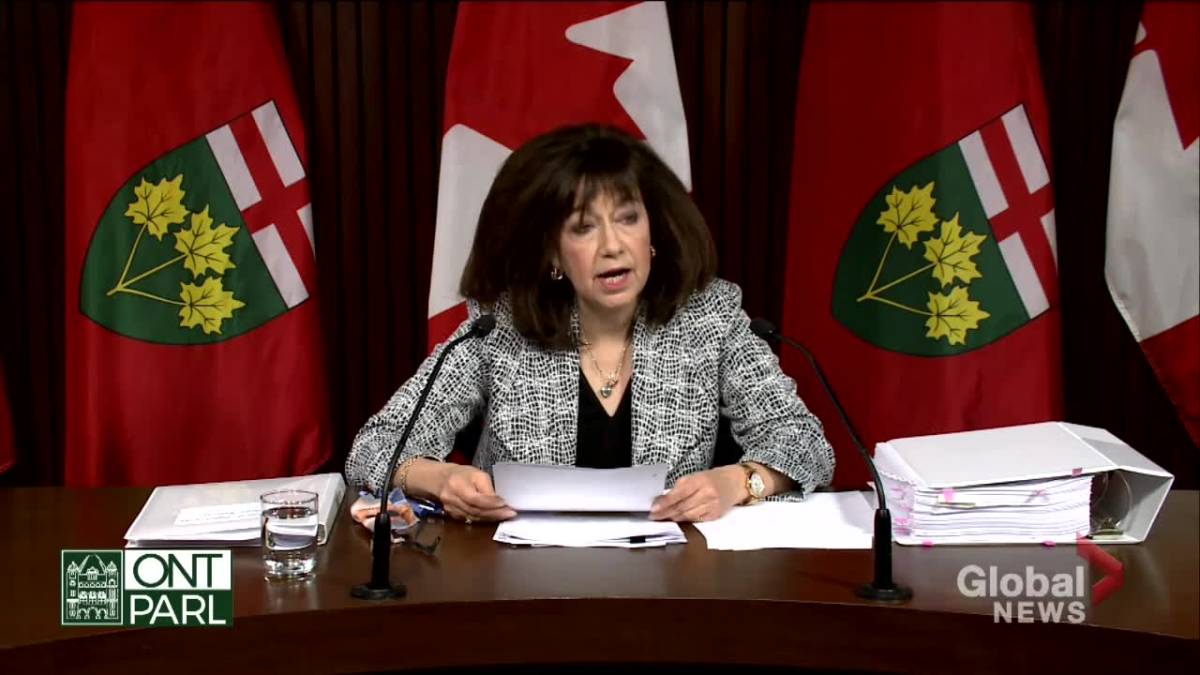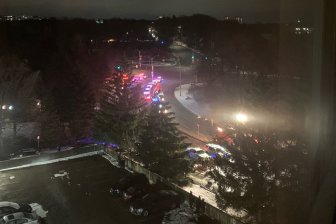Hamilton’s director of epidemiology says “there is no need to panic” with a new variant of COVID-19 and a public health investigation on two Hamilton residents who have just returned from what is considered the epicenter of the new virus version.
COVID Chief Operating Officer Michelle Baird says it is still too early to say what the implications are of the Omicron variant, the fifth and final mutation designated by the World Health Organization (WHO).
Read more:
Omicron variant: WHO expects more information on transmission ‘in a few days’
“At this point, we are just following the direction of the province and trying to understand what that science is,” Baird told CHML 900. Good morning hamilton.
“Certainly, when we know more, we will see at that moment what must happen.”
The WHO previously warned that Omicron poses a “very high” risk of infections, but has not yet determined its potential impact. The agency is expected to have more data on whether it is more transmissible than other variants in the coming days.
“The number of people testing positive has increased in areas of South Africa affected by this variant, but epidemiological studies are underway to understand whether it is due to Omicron or other factors,” the WHO said in its update Sunday.
“It is not yet clear whether infection with Omicron causes more severe disease compared to infections with other variants, including Delta.”
Hamilton Public Health is still waiting for the results of the genome sequencing of the two infected local residents to see if it is the new variant.
Baird says there is no definitive connection to Omicron, except for the fact that they returned with a COVID infection from a region with high case rates with the variant.
“So I can’t specifically go into the details of the individual cases, but I will say that both of them are isolating themselves and all of their contacts are isolating themselves,” Baird said.
As of Tuesday, Canada had confirmed seven cases of Omicron: four in Ontario and one in Quebec, Alberta and British Columbia.
The Canadian government is also requesting the National Immunization Advisory Committee (NACI) to quickly provide the latest guidance on the use of boosters in the context of the new Omicron variant.
So far, NACI has recommended booster shots for seniors, front-line healthcare workers, long-term care residents, and other high-risk groups.
Three more African nations were added to Canada’s list of travel bans on Tuesday: Nigeria, Malawi and Egypt.
It brings the total to ten, including the seven banned on Friday: South Africa, Mozambique, Namibia, Zimbabwe, Botswana, Lesotho and Eswatini.
Read more:
Omicron Bypass: Canada Extends Travel Ban, Seeks Booster Guide
Canadians and permanent residents, as well as all those who have the right to return to Canada, who have transited these countries in the last two weeks, will have to self-quarantine, get tested at the airport and wait for the test results. before coming out of quarantine. .
Baird says that with the possibility that the variant is potentially in Hamilton, residents should still follow public health guidelines and only get tested if they experience COVID symptoms.
“So at this time, we are not encouraging further testing. Of course, we are encouraging anyone to get tested if they are not feeling well, ”Baird said.
“Continue with the same measures regarding the use of the mask, physically distancing yourself where possible and following the same good public health measures that people have been doing for the last 18 months.”
Hamilton Reports 33 New COVID-19 Cases, 3 New Outbreaks
Hamilton Public Health reported 33 new COVID-19 cases on Wednesday, which is above the average number of cases seen in the past seven days.
With the day-over-day spike, the city’s seven-day average case rate is now 24, up from 21 reported Tuesday.
The city had an overall average rate of 19 cases per day throughout November, slightly lower than the average of 22 cases per day reported for the month of October.
Active cases increase day-over-day to 178 compared to 159 reported on Tuesday.
Read more:
Ontario Reports 780 New COVID-19 Cases, 5 More Deaths
More than 70% of all active cases correspond to people under 50 years of age, while 39% are under 30 years of age.
The city’s percent positivity rate, which represents the number of tests that returned positive in labs, dropped slightly week-over-week to 2.2 percent from 2.4 percent. The number is still below the provincial average of 3.1 percent reported Wednesday.
The city revealed three new school outbreaks bringing the total number of active increases at educational institutions to nine as of December 1.
Thirty-nine of the city’s 48 total cases related to 12 ongoing outbreaks come from schools.
The largest is at St. Gabriel Catholic Elementary School, which has 14 cases in total, one among staff and 13 among students.
Read more:
US Reports First Omicron Variant Case As Officials Examine Travel Rules
In the past 14 days, both public boards together have reported 66 cases, with 51 among students.
Hospitals in Hamilton reported a total of 15 COVID-19 patients as of Wednesday, one more than the 14 reported Tuesday.
Both St. Joe’s and Hamilton Health Sciences (HHS) average less than one new hospital admission per day.
More than 83.4% of eligible Hamiltonians 12 years and older are fully vaccinated
Over the past week, Hamilton’s health partners have administered more than 8,100 doses of vaccines, with the highest intake for the week on Friday – 2,856 injections.
With a COVID-19 vaccine available for children ages five to 11, the city saw an 82.8 percent increase in doses administered week over week.
During the past seven days, the city fired 14,867 shots, about 6,700 more than from November 17 to 23.
The average number of injections per day for November, 1,239, exceeded the number of injections given per day for the whole of October by just under 300 doses.
Public health estimates that about 17 percent of the city’s 42,000 children, eligible for a vaccine, have received or are scheduled to receive a dose in the next 14 days.
Read more:
Omicron COVID-19 variant poses ‘very high’ global risk, WHO warns
As of Sunday, 83.4 percent of eligible Hamiltonians age 12 and older have been fully vaccinated, while 86.3 percent have received at least a single dose. The city still lags behind the provincial average, which has 86.3 percent fully vaccinated and 90 percent with at least one dose of vaccine.
Residents ages 70 to 84 have reached the Ministry of Health’s goal of 90% coverage for the first and second doses. Meanwhile, Hamiltonians ages 25-29 represent the lowest vaccination rates of those eligible in the community with just over 73.4 percent fully vaccinated.
Hamilton trails 31 other public health units in the percentage of two-dose vaccines.
– with files from Saba Abiz, Rachael D’Amore, Eric Stober and David Lao
See link »
© 2021 Global News, a division of Corus Entertainment Inc.
Reference-globalnews.ca

